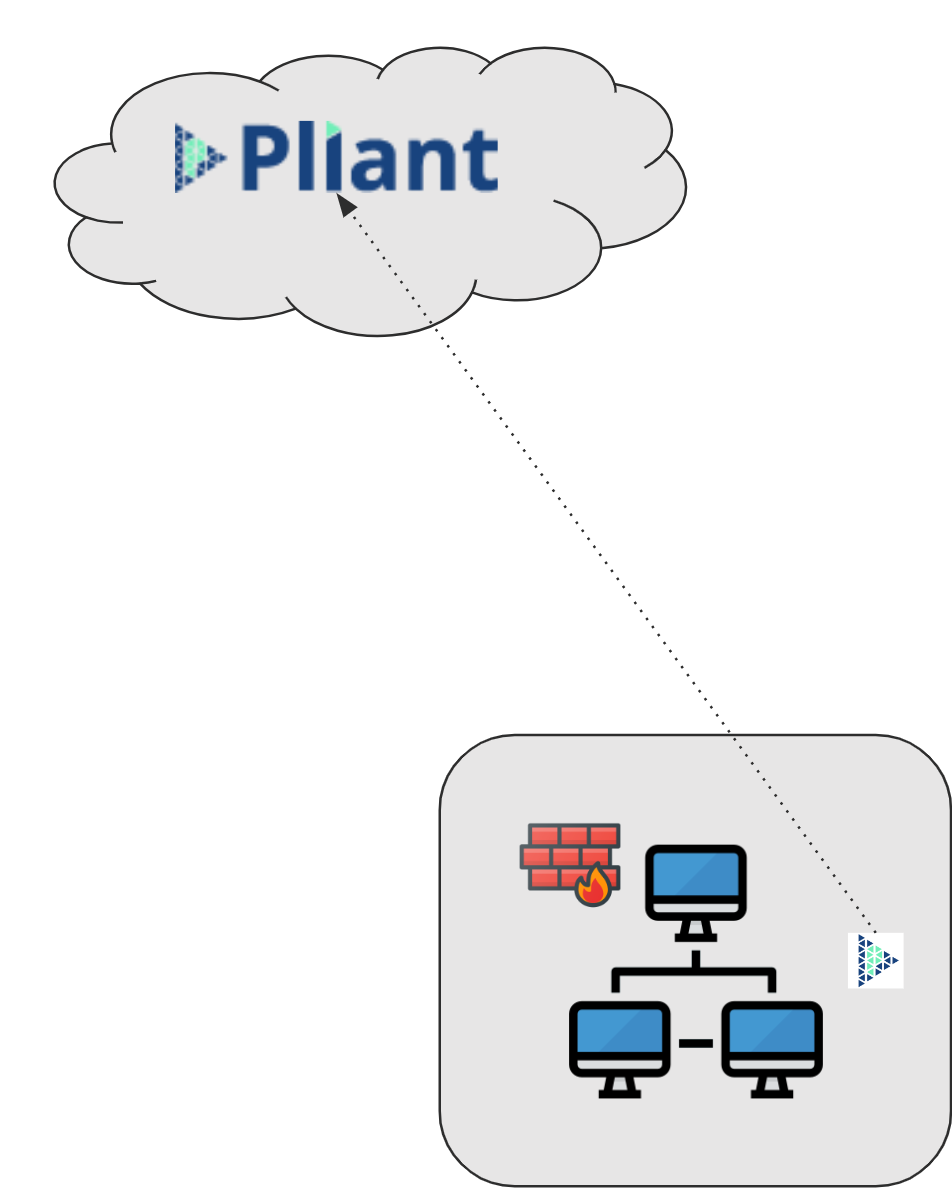Remote Workers
What are remote workers in Pliant?
In a Pliant instance running the default configuration, there are two workers running within the instance on the Kubernetes cluster. These are members of the default worker group, and flows will be executed here by default.
Pliant’s Remote Worker feature allows you to extend the ability to execute workflows to remote networks. Remote workers run as appliances, containers, or executable programs from a location that the main Pliant workers cannot reach directly. When a remote worker starts up, it will connect back to the managing Pliant instance over an encrypted HTTPS(Port 443) connection to join a custom worker group. Typically this means that no firewall changes are needed. Workflows assigned to the custom worker group will execute on the connected remote worker(s). You can join multiple remote workers to the same remote worker group.
Steps to set up a remote worker
Deploy one of the three remote worker types:
Remote Worker Requirements
Network: All remote workers require the ability to initiate a connection back to the main Pliant instance on TCP port 443 (HTTPS). The Pliant instance does not initiate any network connections to remote workers. Generally speaking, the remote worker connects and listens for jobs, Pliant sends a task to the remote worker, then the worker does the job and returns the result back to Pliant.
Pliant Configuration: A worker group must be configured, and access to the worker group provided to users via a role.
Remote Worker OVA
The Remote Worker OVA is the most popular option, as no experience with containers is required, and all dependencies are fully packaged and easily updated. Any changes to the available integrations are automatically propagated to all appliance based workers. The remote worker by default has 1 CPU, 4GB RAM, and a 30GB thin-provisioned hard disk.
For more, see: Set Up Pliant Remote Worker Appliance
Containerized Worker
This option is for customers who already have a Docker installation or have familiarity with container systems. Installation of the addon services is optional. As with the OVA, changes to the available integrations are automatically propagated to all appliance based workers. For a full installation of the remote worker containers, we recommend allocating at least 1 CPU, 4GB of RAM, and 10GB of disk space on your Docker host.
Your Docker host must have Docker Compose available in addition to Docker
For more, see: Set up Remote Worker container with containerized add-ons
